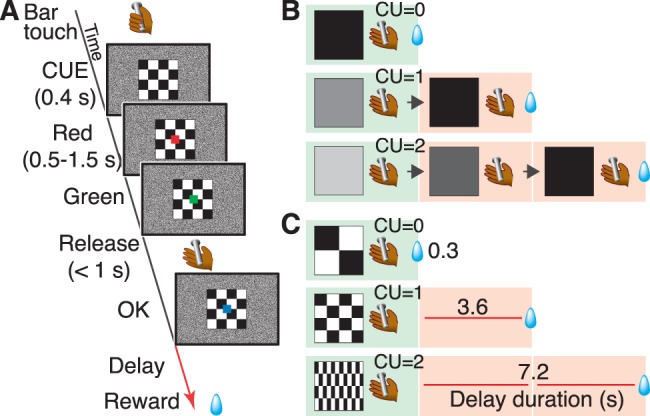Figure 1. Behavioral paradigm. A.

Sequence of events during a trial of the work/delay task. A monkey initiated a trial by touching the bar in the chair, 100 ms later a visual cue (13° on a side), which will be described below, was presented at the centre of the monitor. After 500 ms, a red target (0.5° on a side) also appeared at the centre of the monitor. After a variable interval of 500–1,500 ms, the target turned green, indicating that the monkey could release the bar for correct performance. If the monkey responded between 200 and 1,000 ms, the target turned blue indicating the trial had been completed correctly. On correct trials, one drop of water reward was delivered immediately or after a delay (3.6 s or 7.2 s). An inter-trial interval (ITI) of 1 s was enforced before the next trial could begin. If the monkey made an error by releasing the bar before the green target or within 200 ms after the green target appeared or failed to respond within 1 s after the green target, all visual stimuli disappeared, the trial was terminated immediately, and, after the 1-s ITI, the trial was repeated. B Relationships between visual cues and trial schedule in the work trials. C Relationship between visual cues and delay duration in the delay trials. Trials on green boxed were used for the analysis. CU denotes the remaining cost (arbitral unit) to get reward, that is, either remaining workload to perform trial(s) or remaining delay periods (equivalent to a trial). It corresponds the number of red boxes placed to the reward.
